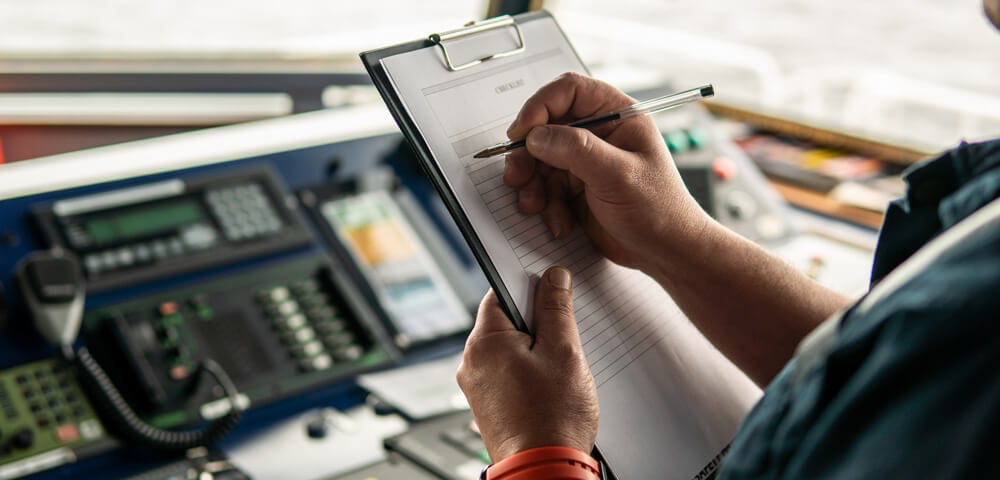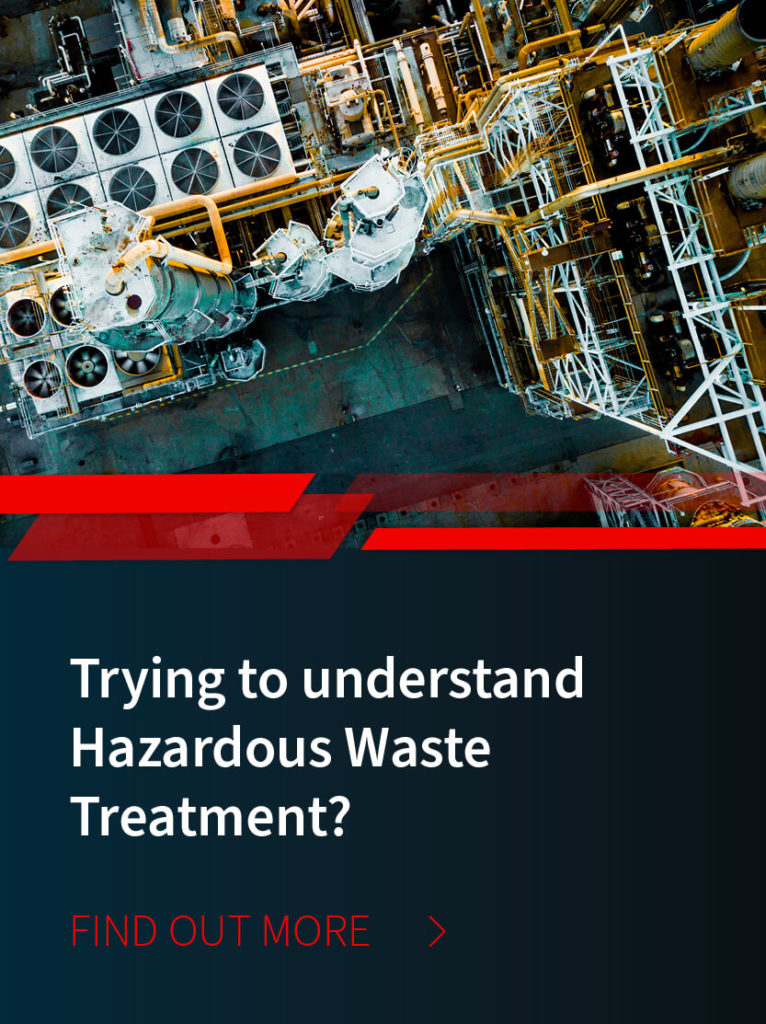
/ IN THIS BLOG
If your facility relies on a waste disposal company to transport regulated or hazardous waste from your site, employees must be trained to handle certain documents, including the bill of lading or a hazardous waste shipping manifest. They must also know the difference between the two.
If you need a waste management company to assist with the disposal of your generated waste, it's imperative that any employees handling that waste or preparing it for shipment are trained and qualified to handle associated paperwork. In particular, that means they must be trained and legally qualified to fill out either a hazardous waste manifest or a bill of lading depending on the contents of the particular waste shipment.
Do not let an unqualified employee fill out hazardous waste manifests or bills of lading or you may increase the risk of errors and resulting fines and penalties for non-compliance. Improperly filled out or complete lack of a hazardous waste manifest is among the most common violations of hospitals that results in fines.
01 / What is the difference between a Bill of Lading and a Hazardous Waste Manifest?
Any employees at a site that produces or generates a regulated or hazardous waste needs to know the difference between the bill of lading and a hazardous waste manifest.
Regulated medical waste includes biohazardous or infectious waste or anything that has the potential to transmit infection, such as contaminated blood or bodily fluids. Other types of regulated medical waste include:
Pathological waste
Contaminated sharps
Cultures and stocks (infectious agents)
Isolation waste
Any contaminated animal carcass, bedding or body parts
The Environmental Protection Agency (EPA) defines hazardous waste as anything that contains properties or certain characteristics that may be harmful to human health or the environment. Hazardous waste can be a solid, a liquid, or a gas. Turn to the EPA for how hazardous wastes are classified by lists or characteristics.
A hazardous waste manifest must accompany any hazardous waste shipped off-site. The form tracks hazardous waste from its generation to its final disposal.
02 / Bill of Lading Training
Training requirements for bills of lading (often simply called a BOL) are much less stringent than they are for manifests. This is because the materials transported are less hazardous or potentially dangerous than a hazardous waste, which requires special handling. A bill of lading might be filled out for:
Nonhazardous wastes
Biohazardous materials (also termed red bag waste or biomedical waste)
Universal waste such as lightbulbs, batteries, pesticides, lamps, and so on
However, just because waste shipped on a bill of lading is less dangerous than waste shipped on a hazardous waste manifest doesn't mean it should be carelessly handled or thrown in standard trash or not handled according to local, state, and federal laws. To that end, every employee who fills out or deals with this piece of paperwork should have the proper training and approval by certification by the Department of Transportation (DOT). Turn to your local and state government agencies to determine requirements for compliance.
03 / Hazardous Waste Manifest Training
Because hazardous materials pose more of an overt threat to the general public and the environment, the training required for properly filling out and handling manifests is more intense than that needed for a bill of lading. Before any person can sign such a manifest, they must go through comprehensive training related to specific Department of Transportation requirements—most notably 49 CFR §172.204 (Shipper’s certification) and §172.205 (Hazardous waste manifest).
The person actually signing the manifest is the last ‘line of defense’ to ensure compliance before that shipment leaves the site, so it is vital that the person signing that document is confident that everything related to the shipment and the documentation accompanying it is in compliance with local, state, and federal laws. As such, function-specific training in everything from classification and identification of contents, to compliant packaging and labeling is a must.
04 / Proper Training Helps Ensure Environmental Safety
Bills of lading and hazardous waste manifests are required so that waste transporters know what kind of waste they are transporting and where it can be taken for destruction, decontamination or otherwise rendered harmless before it is disposed of. In its simplest terms, these documents notify waste companies that their cargo is not standard trash or waste, and must be disposed of in appropriate landfills or sites.
Even if a shipment accompanied by a bill of lading contains, for example, a small amount of mercury or a different kind of regulated metal (see the Resource Conservation and Recovery Act or RCRA as it is commonly known), it is not safe to dispose of such waste in a ‘common’ or regular landfill until it has been rendered harmless. This kind of paperwork is in place because the items within the waste shipment have been deemed unsafe for the standard trash.
For this reason, it is also important to vet a waste management company and ensure that their employees are trained and certified in handling and filling out bills of lading or hazardous waste manifests. If you end up working with unqualified employees who don't properly fill out their paperwork, they run the risk of environmental contamination – and massive fines.
05 / Proper Training Helps Ensure Financial Security
Failure to comply with EPA regulations can mean big fines for your facility, business, or company. You and your business are ultimately responsible for anything and everything that happens with your waste. It’s called the Cradle-to Grave approach. Even if you contract out with a waste management company, and that company makes the mistakes, those fines can still fall back on you as well as the waste company. In addition to environmental safety, working with a qualified, trained, experienced, reputable company could actually save you money in avoided fines.
Having your shipping manifests and bills of lading filled out accurately - every time - and receiving copies of that paperwork - every time - means you know exactly what was sent out, whether that was biohazardous materials or hazardous waste, and you can prove to any examining body during an audit that you have been doing everything right. Again, this helps you avoid sizeable fines.
At the most elementary level, bill of lading and hazardous waste manifest training also means you'd be qualified to review all paperwork and ensure that you are being properly billed according to what type of waste you're shipping based on volume.
06 / Training is not just for the Waste Management Company
Generators and transporters alike should be educated about how to properly and accurately handle all waste shipment paperwork. Anybody involved in this paperwork process should be properly trained, which reduces the risk of mistakes that might contribute to dangerous and costly mistakes.
While training is only required for the people actually dealing with the paperwork, it certainly wouldn't hurt to have somebody come on-site and train everybody at your facility at once. This would qualify everyone to check that any given shipment meets all necessary requirements, meaning everything is properly labeled, lids are correctly and safely adhered, the right container is used for the right waste stream, and that all aspects of the shipping process meet all DOT requirements, and so on.
Violations of any kind can lead to huge financial fines as well as risks to reputation. For more information about what you should be looking for in hazardous waste management companies or how to ensure their employees are properly filling out your paperwork, contact an experienced and knowledgeable company such as MCF Environmental Services today. With decades of experience in medical, regulated, and hazardous waste management, we can help you ensure safety and compliance.
Robert Losurdo
President, COO








